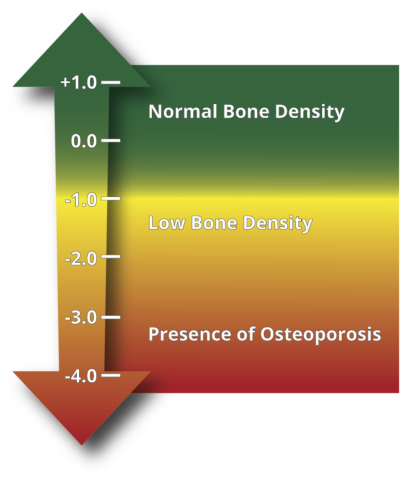Healthy Bones

Bone Health Awareness and Osteoporosis Prevention
May is Osteoporosis Awareness Month. About 10 million Americans have osteoporosis and nearly 34 million more are at risk. It’s most common among older adults, especially women. Broken bones in older adults can lead to more severe health issues, loss of independence and increased risk of mortality. Our DEXA scan can test your bone mineral density (BMD) to help determine your risk for this very common “silent” disease.
What Happens to Our Bones?
Osteoporosis causes bones to become weak and brittle. Bone is living tissue and our body regularly breaks down old bone replacing it with new bone matter. That is, until our mid-30’s, when our bone loss is greater than what our body can replace. At this point, our bone mineral density (BMD) decreases. BMD is simply the amount of calcium and other minerals in our bone. Since we can’t replace bone matter, it’s vital that we pay attention to our bone health, ensuring preventative measures are taken to avoid future falls and breaks.
Protective Measures
How to Lower the Risk of Osteoporosis
- Quit smoking.
- Add plenty of calcium and vitamin D to your well-balanced diet.
- Combine strength training, such as weights or resistance training, with cardio activity, such as running or walking.
- Reduce alcohol consumption or quit drinking.
Bone Mineral Density (BMD) Screening and T-Scores
Early detection is important. A bone density test can help anyone at risk of osteoporosis by evaluating the bone density in the hip, spine or other bones to determine the risk of developing osteoporosis. It’s a painless test, similar to an X-ray. The low dose X-ray, or BMD, shows how thick your bones are.
Results are often reported as a T-score, which compares your bone density to that of a healthy young adult (T-score =0). Scores below 0—negative scores—show a lower BMD. The lower the score, the higher the risk.
Your bone density is considered “normal” if your T-score is between -1 and 1. A T-score between -1 and -2.5 means low bone mass. A T-score of -2.5 or lower indicates osteoporosis. For those at risk, treatment options are available, including balance and fall prevention training with physical therapists to reduce the risk of broken bones.

Risk Factors
During the early stages of bone loss there are often little to no symptoms, but there are several risk factors. The U.S. Preventative Services Task Force recommends bone density screening for women over 65 or anyone with increased risk factors, including those who have the following:
- Broken a bone after age 50
- Family history of broken bones or osteoporosis
- Early menopause
- History of smoking
- Lack of vitamin D and/or calcium
- Small or slim frame
- History of heavy drinking
- Drop in estrogen or testosterone due to age or hormonal disorder
If you are a woman over the age of 65 or have any of the above risk factors, talk to your provider about your risk for developing osteoporosis and a referral for this simple, non-invasive scan. Medicare and most insurance plans cover bone density tests, when ordered by your physician.
Published on April 15, 2025
